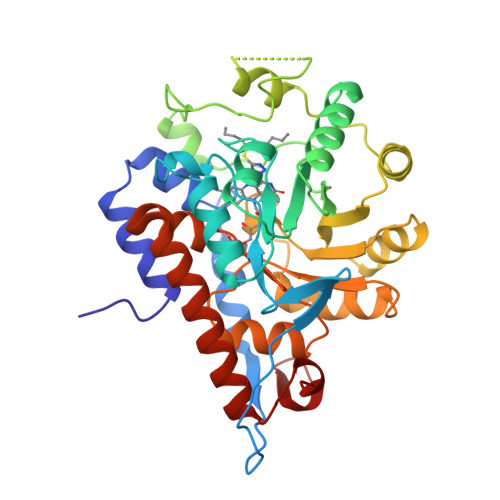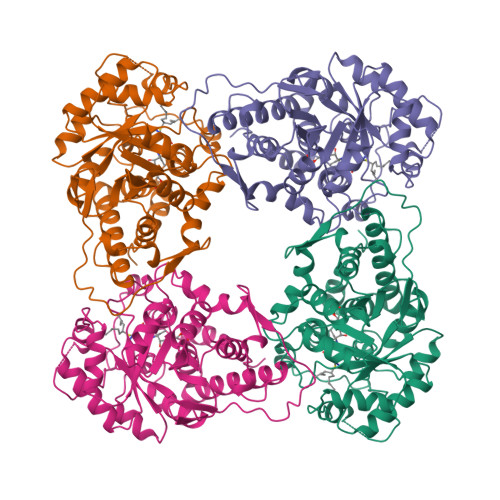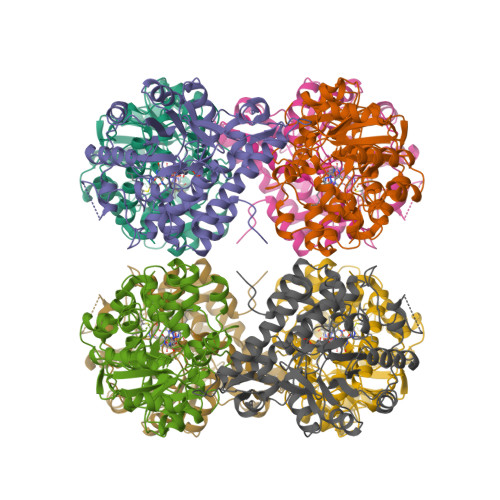Three-dimensional structures of glycolate oxidase with bound active-site inhibitors.
Stenberg, K., Lindqvist, Y.(1997) Protein Sci 6: 1009-1015
- PubMed: 9144771
- DOI: https://doi.org/10.1002/pro.5560060506
- Primary Citation of Related Structures:
1AL7, 1AL8 - PubMed Abstract:
A key step in plant photorespiration, the oxidation of glycolate to glyoxylate, is carried out by the peroxisomal flavoprotein glycolate oxidase (EC 1.1.3.15). The three-dimensional structure of this alpha/beta barrel protein has been refined to 2 A resolution (Lindqvist Y. 1989. J Mol Biol 209:151-166). FMN dependent glycolate oxidase is a member of the family of alpha-hydroxy acid oxidases. Here we describe the crystallization and structure determination of two inhibitor complexes of the enzyme, TKP (3-Decyl-2,5-dioxo-4-hydroxy-3-pyrroline) and TACA (4-Carboxy-5-(1-pentyl)hexylsulfanyl-1,2,3-triazole). The structure of the TACA complex has been refined to 2.6 A resolution and the TKP complex, solved with molecular replacement, to 2.2 A resolution. The Rfree for the TACA and TKP complexes are 24.2 and 25.1%, respectively. The overall structures are very similar to the unliganded holoenzyme, but a closer examination of the active site reveals differences in the positioning of the flavin isoalloxazine ring and a displaced flexible loop in the TKP complex. The two inhibitors differ in binding mode and hydrophobic interactions, and these differences are reflected by the very different Ki values for the inhibitors, 16 nM for TACA and 4.8 microM for TKP. Implications of the structures of these enzyme-inhibitor complexes for the model for substrate binding and catalysis proposed from the holo-enzyme structure are discussed.
Organizational Affiliation:
Department of Medical Biochemistry and Biophysics, Karolinska, Institute, Stockholm, Sweden.





















